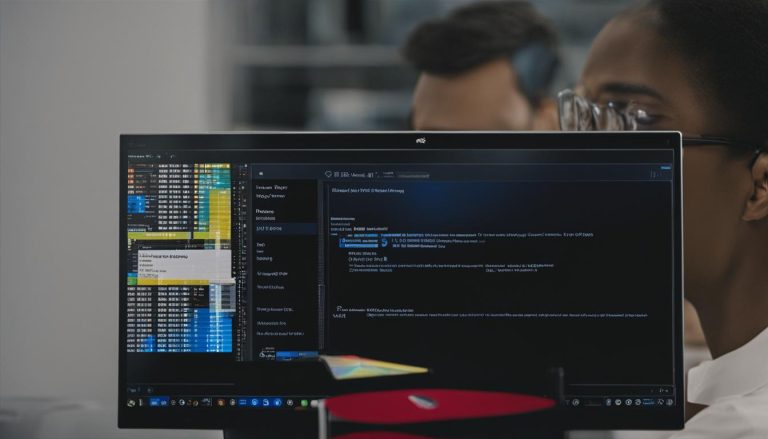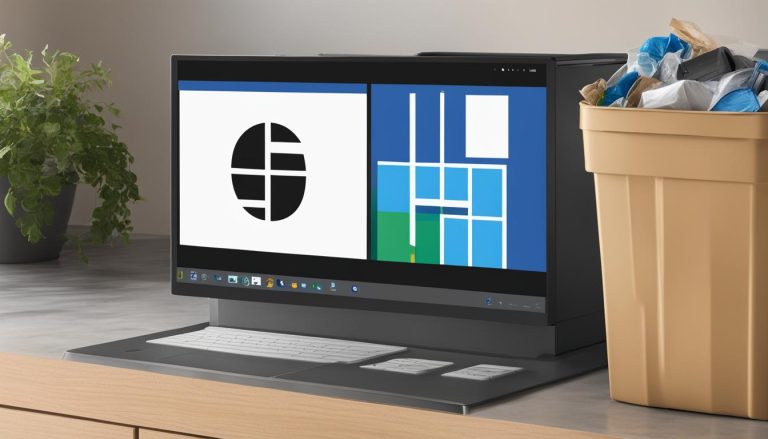Understanding What is Terminal Emulator: A Comprehensive Guide
A terminal emulator, also known as a terminal application, is a computer program that emulates a video terminal within another display architecture. It is a crucial tool for developers and users alike, providing access to command-line interfaces (CLI) and text user interface (TUI) applications.
A terminal window, which is a terminal emulator inside a graphical user interface (GUI), allows users to interact with a text terminal and its associated applications. These applications can run on the same machine or be accessed remotely using various connection methods such as telnet, ssh, dial-up, or direct serial connections.
In Unix-like operating systems, multiple terminal windows can be connected to the local machine, each supporting escape sequences for controlling colors, cursor positions, and other features. Terminal control sequences, such as ECMA-48, ANSI X3.64, or ISO/IEC 6429, provide standards for controlling terminals and their display capabilities.
The history of terminals dates back to the early days of computing when computer terminals were connected to minicomputers or mainframe computers. Initially, terminals had green or amber screens and communicated with the computer through serial ports using protocols like EIA RS-232 or RS-422. IBM systems used proprietary protocols or coaxial cables, while other computer manufacturers competed for visual display suppliers. Interestingly, the Intel 8008, initially designed as a microprocessor, found its purpose as a terminal processor.
The advancement of terminal technology came with the introduction of the IBM 3270 and the DEC VT100 terminals. These terminals revolutionized the terminal experience, offering improved features and backward compatibility with older software. Intelligent terminals, capable of processing user input locally without constant communication with the main computer, started to emerge, changing the landscape of terminal usage. Despite the introduction of ANSI terminals, earlier models were often referred to as “dumb” terminals.
The terminal emulator interprets data sent by the shell using ANSI escape codes. These codes serve as instructions for the terminal emulator to perform various tasks such as changing colors, moving the cursor, or applying styles. By parsing and displaying the data received from the shell, the terminal emulator acts as an interface for users to interact with the operating system, run processes, and execute scripts. The shell, on the other hand, provides an interface to the operating system, enabling users to interact with the file system, execute commands, and run scripts.
The shell and the terminal emulator are connected through a pseudoterminal (pty), which establishes bi-directional communication channels. This connection allows users to type commands in the terminal and receive output from the shell. It facilitates the seamless interaction between the two components, creating a cohesive terminal experience.
Users can also personalize their terminal experience by customizing the appearance and functionality of their terminal window. Configuration files can be modified, and terminal emulator programs with extensive customization options can be used to achieve the desired look and feel.
Key Takeaways:
- A terminal emulator emulates a video terminal within another display architecture.
- It provides access to command-line interfaces (CLI) and text user interface (TUI) applications.
- Terminal windows allow users to interact with text terminals and their applications.
- Connection methods like telnet, ssh, dial-up, or direct serial connections enable remote access.
- Terminal control sequence standards, such as ECMA-48, ANSI X3.64, or ISO/IEC 6429, control terminal display capabilities.
- Historically, terminals were connected to minicomputers or mainframes, evolving to intelligent terminals.
- The terminal emulator interprets data sent by the shell using ANSI escape codes.
- Users can customize their terminal appearance and functionality through configuration files and terminal emulator programs.
Terminal Emulator: Creating a Bridge Between Devices and Hosts
A terminal emulator serves as a powerful tool that creates a bridge between devices and hosts, enabling seamless communication and interaction. It acts as a program that emulates a video terminal within another display architecture, providing users with access to text terminals and applications.
By downloading and installing a terminal emulator program, users can connect to various devices and hosts using different protocols such as telnet, ssh, dial-up, or direct serial connections. These programs often come with a range of features and benefits that enhance the overall user experience.
Terminal emulator programs can be easily obtained through downloading them from reputable sources. Many developers and organizations offer terminal emulator downloads for free or at affordable prices. These programs are designed to provide a user-friendly interface for connecting to remote systems, sending commands, and receiving responses.
One of the key features of a terminal emulator program is its ability to support different terminal types and protocols. This allows users to connect to a wide range of devices and hosts, including servers, routers, switches, and embedded systems. The program acts as a virtual terminal, providing a graphical representation of the connected device or host.
Terminal emulators also offer various benefits to users. They enable efficient troubleshooting and remote administration by providing a command-line interface to the remote system. This allows users to execute commands, configure settings, and monitor the system’s performance from a centralized location.
Moreover, terminal emulator programs often come with customizable settings and options. Users can personalize their terminal window’s appearance, including font size, color schemes, and background images. This customization enhances the overall user experience and allows for a more personalized working environment.
In summary, a terminal emulator program plays a crucial role in creating a bridge between devices and hosts. It enables seamless communication and interaction by emulating a video terminal within another display architecture. By downloading and installing a terminal emulator program, users can connect to remote systems, troubleshoot issues, and perform remote administration tasks. These programs offer a range of features and benefits, including support for various terminal types and protocols, customizable settings, and a user-friendly interface.
The Terminal Window: Accessing Text Terminals and Applications
A terminal window, which is a terminal emulator inside a graphical user interface, provides the user with access to a text terminal and its applications, such as command-line interfaces (CLI) and text user interface (TUI) applications.
In Unix-like operating systems, it is common to have one or more terminal windows connected to the local machine. These terminals typically support escape sequences for controlling color, cursor position, and other features. There are several terminal control sequence standards, such as ECMA-48, ANSI X3.64, or ISO/IEC 6429.
The Terminal Window: Accessing Text Terminals and Applications
The history of terminals dates back to the early days of computing when computer terminals were connected to minicomputers or mainframe computers. Most terminals had green or amber screens and communicated with the computer via a serial port using protocols like EIA RS-232 or RS-422. IBM systems used proprietary protocols or coaxial cables, while other computer manufacturers competed for visual display suppliers. In fact, the Intel 8008, a microprocessor, was originally designed as a terminal processor.
With the introduction of the IBM 3270 and the DEC VT100, terminal technology improved significantly. However, not all programmers utilized the new terminal features, allowing backward compatibility with older software. Some terminals were classified as “intelligent,” meaning they could process user input within the terminal without interrupting the main computer at each keystroke. Early terminals, despite the introduction of ANSI terminals, were often considered “dumb” terminals. However, advancements in microprocessors and lower memory costs allowed intelligent terminals to handle editing operations and provide user-friendly local editing of data.
The terminal emulator interprets data sent by the shell, using escape sequences known as ANSI escape codes. These codes are used when the shell needs to send more involved instructions to the terminal, such as changing colors, moving the cursor, or applying styling. By parsing and displaying the data received from the shell, the terminal emulator provides an interface for the user to interact with the operating system, run processes, and access basic scripting capabilities.
The shell, another integral component of the terminal ecosystem, acts as an interface to the operating system. It allows users to interact with the file system, run processes, and execute scripts. The shell and the terminal emulator are connected through a pseudoterminal (pty). The pty provides bi-directional asynchronous communication channels between the shell and the terminal emulator, allowing the user to type commands in the terminal and receive output from the shell.
In addition to understanding the basic components of a terminal emulator, it is also possible to customize and personalize the terminal experience. Users can change the appearance, color schemes, and fonts of their terminal window to suit their preferences. This customization can be achieved through various methods, such as modifying configuration files or using terminal emulator programs that offer extensive customization options.
In conclusion, a terminal emulator is a crucial tool for developers and users alike. It allows for the emulation of a video terminal within another display architecture, providing access to command-line interfaces and text user interface applications. With the shell acting as the interface to the operating system and the pty connecting the shell and the terminal emulator, users can interact with the system and perform various tasks. Customization options further enhance the terminal experience, allowing users to personalize the appearance and functionality of their terminal window.
Connecting Terminals: Telnet, SSH, Dial-up, and Serial Connections
These applications can run on the same machine or a different one using telnet, ssh, dial-up, or a direct serial connection. Popular terminal emulator programs like Putty, MobaXterm, and Remote Desktop Manager facilitate these connections.
A terminal emulator acts as a bridge between devices and hosts, allowing users to establish connections with remote systems. Telnet, a network protocol, enables remote login to other computers on a TCP/IP network. It provides terminal emulation capabilities by establishing a virtual terminal connection over a network.
SSH (Secure Shell) is a widely used cryptographic network protocol for secure remote login and other secure network services. It provides strong encryption and authentication, making it a more secure alternative to telnet. SSH allows for secure remote administration and file transfers, ensuring the privacy and integrity of data exchanged between client and server.
Dial-up connections, although less common today, were the primary means of remote access before widespread internet connectivity. Dial-up modems established connections over telephone lines, enabling access to remote systems through terminal emulation software.
Serial connections involve direct communication between two devices using dedicated serial ports. Terminal emulators can facilitate these connections, allowing users to establish a direct link between their computer and the target device.
Terminal Control Sequences: Standards for Controlling Terminals
In Unix-like operating systems, it is common to have one or more terminal windows connected to the local machine, supporting escape sequences for controlling color, cursor position, and other features through standards like ECMA-48, ANSI X3.64, or ISO/IEC 6429.
These terminal control sequence standards are essential for ensuring compatibility and consistent behavior across different terminal emulator programs and hardware devices. They define a set of codes that can be used to modify the appearance and behavior of the terminal window.
For example, ANSI escape codes are a widely used standard that allows for the manipulation of text attributes, cursor movement, and screen manipulation. By sending specific sequences of characters, the terminal emulator can interpret and act upon these instructions, resulting in effects such as changing text color, positioning the cursor at a specific location, or clearing the screen.
The ECMA-48 standard, also known as “Control Functions for Coded Character Sets,” provides a comprehensive set of control sequences for managing text display and cursor positioning. It defines escape sequences that can be used to control various aspects of terminal behavior, including printing, erasing, scrolling, and tabulation.
Similarly, ANSI X3.64, also known as the “Control Sequences for Video Terminals and Peripherals,” is another widely adopted standard. It extends upon the ECMA-48 standard and defines additional control sequences for manipulating video terminals and peripheral devices.
ISO/IEC 6429, known as “Control Functions for Coded Character Sets,” is an international standard that aligns with ECMA-48. It specifies control sequences for character handling, editing, and control functions to be used in text processing systems.
These terminal control sequence standards provide a common language for terminal emulators and other devices to communicate with each other. They ensure that the same control codes will produce the same results across different terminal types and software implementations.
By adhering to these standards, terminal emulator developers can ensure compatibility and interoperability, allowing users to switch between different terminal emulation programs or hardware devices without experiencing any significant differences in behavior.
Evolution of Computer Terminals: From Minicomputers to Intelligent Systems
The history of terminals dates back to the early days of computing when computer terminals were connected to minicomputers or mainframe computers, with advancements leading to the development of intelligent systems.
Most terminals of that time featured green or amber screens and communicated with the computer using serial port protocols like EIA RS-232 or RS-422. IBM systems used proprietary protocols or coaxial cables, while other computer manufacturers vied for visual display suppliers. Interestingly, the Intel 8008, initially designed as a microprocessor, found its purpose as a terminal processor.
Advancements in terminal technology took a major stride with the introduction of the IBM 3270 and the DEC VT100. These terminals brought significant improvements to the overall terminal experience. The introduction of the IBM 3270 and DEC VT100 was a turning point, revolutionizing the functionality and capabilities of computer terminals.
Some terminals were classified as “intelligent,” capable of processing user input within the terminal itself without constantly sending requests to the main computer for every keystroke. This intelligent processing significantly improved the user experience and reduced the burden on the main computer. However, many existing software programs did not utilize the advanced features of these terminals, allowing backward compatibility with older software.
Early terminals, despite the introduction of ANSI terminals, were often referred to as “dumb” terminals. The term “dumb” referred to their limited capabilities and inability to process user input locally. However, as microprocessor technology advanced and memory costs decreased, intelligent terminals became more common. These intelligent terminals were equipped with more memory and processing power, enabling them to handle editing operations and provide user-friendly local editing of data.
The introduction of intelligent terminals paved the way for a more interactive and efficient computing experience. Users had greater control and flexibility in interacting with the system, executing commands, and performing tasks. The advent of intelligent systems marked a significant milestone in the evolution of computer terminals.
The Role of Terminal Emulators in Microprocessors: From Intel 8008 to Present
The Intel 8008, a microprocessor, was originally designed as a terminal processor, further showcasing the importance and role of terminal emulators in the evolution of computing.
A terminal emulator plays a crucial role in microprocessors by allowing communication between the user and the computer system. Microprocessors, like the Intel 8008, rely on terminal emulators to provide a user-friendly interface for interacting with the system.
Terminal emulators act as a bridge between the user and the microprocessor, enabling the exchange of commands and data. They interpret and display the information received from the microprocessor, allowing users to view and manipulate the output.
With the advancement of microprocessors, terminal emulators have evolved to meet the increasing demands of users. They have gained enhanced capabilities to handle complex instructions and provide a seamless user experience.
Today, terminal emulators continue to be an integral part of microprocessors, facilitating efficient communication and interaction with the system. Whether it’s executing commands, running processes, or accessing files, terminal emulators provide a versatile interface for users to carry out various tasks.
The development of terminal emulators and their integration with microprocessors has revolutionized the way we interact with computers. From the early days of computing to the present, terminal emulators have played a significant role in shaping the computing landscape.
Advancements in Terminal Technology: IBM 3270 and DEC VT100
With the introduction of the IBM 3270 and the DEC VT100, terminal technology took a significant leap forward, enhancing the user experience and expanding capabilities. These advancements revolutionized the terminal experience and set new standards for terminal functionality.
The IBM 3270, released by IBM in 1971, was a series of terminals specifically designed for use with IBM mainframe computers. The 3270 series introduced a number of innovative features that greatly improved the usability and efficiency of terminal interactions.
One notable feature of the IBM 3270 was its support for block-mode communication, which allowed the terminal to send and receive entire screens of data at once. This significantly reduced the amount of back-and-forth communication between the terminal and the mainframe, resulting in faster and more efficient data transfer.
The DEC VT100, introduced by Digital Equipment Corporation (DEC) in 1978, was another groundbreaking terminal that further advanced the state of terminal technology. The VT100 offered a range of features that greatly enhanced the user experience.
One key feature of the VT100 was its ability to display text in different colors and attribute modes. This allowed for improved visual presentation and made it easier to distinguish different types of information on the screen. Additionally, the VT100 supported cursor movement and positioning commands, enabling more precise control over the terminal display.
The IBM 3270 and the DEC VT100 became popular choices for businesses and computer users alike, setting the standard for terminal technology in their respective time periods. These terminals demonstrated the potential for enhanced user interactions and laid the foundation for future advancements in terminal technology.
Terminal Emulator Functionality: Interpreting ANSI Escape Codes
The terminal emulator interprets data sent by the shell using escape sequences known as ANSI escape codes, allowing for more involved instructions such as changing colors, moving the cursor, or applying styling.
In Unix-like operating systems, it is common to have one or more terminal windows connected to the local machine. These terminals typically support escape sequences for controlling color, cursor position, and other features. There are several terminal control sequence standards, such as ECMA-48, ANSI X3.64, or ISO/IEC 6429.
The history of terminals dates back to the early days of computing when computer terminals were connected to minicomputers or mainframe computers. Most terminals had green or amber screens and communicated with the computer via a serial port using protocols like EIA RS-232 or RS-422. IBM systems used proprietary protocols or coaxial cables, while other computer manufacturers competed for visual display suppliers. In fact, the Intel 8008, a microprocessor, was originally designed as a terminal processor.
With the introduction of the IBM 3270 and the DEC VT100, terminal technology improved significantly. However, not all programmers utilized the new terminal features, allowing backward compatibility with older software. Some terminals were classified as “intelligent,” meaning they could process user input within the terminal without interrupting the main computer at each keystroke. Early terminals, despite the introduction of ANSI terminals, were often considered “dumb” terminals. However, advancements in microprocessors and lower memory costs allowed intelligent terminals to handle editing operations and provide user-friendly local editing of data.
The terminal emulator interprets data sent by the shell, using escape sequences known as ANSI escape codes. These codes are used when the shell needs to send more involved instructions to the terminal, such as changing colors, moving the cursor, or applying styling. By parsing and displaying the data received from the shell, the terminal emulator provides an interface for the user to interact with the operating system, run processes, and access basic scripting capabilities.
The shell, another integral component of the terminal ecosystem, acts as an interface to the operating system. It allows users to interact with the file system, run processes, and execute scripts. The shell and the terminal emulator are connected through a pseudoterminal (pty). The pty provides bi-directional asynchronous communication channels between the shell and the terminal emulator, allowing the user to type commands in the terminal and receive output from the shell.
In addition to understanding the basic components of a terminal emulator, it is also possible to customize and personalize the terminal experience. Users can change the appearance, color schemes, and fonts of their terminal window to suit their preferences. This customization can be achieved through various methods, such as modifying configuration files or using terminal emulator programs that offer extensive customization options.
In conclusion, a terminal emulator is a crucial tool for developers and users alike. It allows for the emulation of a video terminal within another display architecture, providing access to command-line interfaces and text user interface applications. With the shell acting as the interface to the operating system and the pty connecting the shell and the terminal emulator, users can interact with the system and perform various tasks. Customization options further enhance the terminal experience, allowing users to personalize the appearance and functionality of their terminal window.
The Connection: Pseudoterminal (pty)
The shell, another integral component of the terminal ecosystem, acts as an interface to the operating system, allowing users to interact with the file system, run processes, and execute scripts.
The shell and the terminal emulator are connected through a pseudoterminal (pty). The pty provides bi-directional asynchronous communication channels between the shell and the terminal emulator, allowing the user to type commands in the terminal and receive output from the shell.
This connection enables seamless communication between the user and the operating system. When a user enters a command in the terminal emulator, it sends the command to the shell via the pty. The shell then processes the command and returns the output back to the terminal emulator, which displays it to the user.
This interaction is crucial for executing commands, navigating the file system, and performing various tasks within the operating system. Without the connection provided by the pty, the terminal emulator would not be able to communicate effectively with the shell, rendering it unable to execute commands or access system resources.
The pty acts as a virtual terminal, creating a bridge between the shell and the terminal emulator. It allows the two components to work together seamlessly, enabling users to utilize the power of the shell and the convenience of the terminal emulator in their daily tasks.
The Connection: Pseudoterminal (pty)
The shell and the terminal emulator are connected through a pseudoterminal (pty), providing bi-directional asynchronous communication channels between the shell and the terminal emulator. This connection allows users to type commands in the terminal and receive output from the shell.
Personalizing the Terminal Experience: Customization Options
In addition to understanding the basic components of a terminal emulator, users can also customize and personalize the terminal experience to suit their preferences through various methods and terminal emulator programs.
Changing the appearance, color schemes, and fonts of the terminal window can significantly enhance the user experience. There are multiple ways to achieve this customization:
- Modifying Configuration Files: Many terminal emulators allow users to modify configuration files to customize the terminal appearance. These files typically contain settings for colors, fonts, and other visual elements. Users can adjust these settings according to their preferences.
- Utilizing Terminal Emulator Programs: Several terminal emulator programs offer extensive customization options. These programs provide graphical interfaces that enable users to easily customize their terminal window. They often include options to change colors, fonts, transparency, and even the shape of the cursor.
Whether it’s through modifying configuration files or using terminal emulator programs, users have the flexibility to create a terminal environment that is visually appealing and tailored to their needs. Customization options not only enhance the aesthetic appeal of the terminal window but also improve functionality and ease of use.
By personalizing the terminal appearance, users can create a workspace that is visually pleasing and conducive to productivity. Custom color schemes and font choices can help reduce eye strain during long coding sessions. The ability to adjust cursor styles and blink rates can improve focus and efficiency.
Furthermore, customization options allow users to differentiate between multiple terminal windows or sessions. Users can assign unique colors or backgrounds to different terminals, making it easier to identify and switch between them.
In addition, customization options can help in creating a consistent and personalized working environment across different systems. Users can save their preferred settings and configurations, allowing them to quickly set up their terminal window on new machines or when working remotely.
Terminal emulator programs with extensive customization features provide an intuitive and user-friendly interface for customizing the terminal appearance. These programs often have a wide range of options and settings, allowing users to personalize their terminal experience with ease.
Customization is not limited to the visual aspects of the terminal window. Some terminal emulator programs also offer additional functionality customization. Users can configure keyboard shortcuts, define custom commands, or create macros to automate repetitive tasks.
Overall, customization options play a vital role in tailoring the terminal experience to individual preferences. By customizing the appearance and functionality of the terminal window, users can create a workspace that is visually appealing, efficient, and personalized to their workflow.
Conclusion
In conclusion, a terminal emulator is a crucial tool for developers and users alike, enabling the emulation of a video terminal within another display architecture, granting access to command-line interfaces and text user interface applications.
A terminal window, which is a terminal emulator inside a graphical user interface, provides users with access to a text terminal and its applications, such as command-line interfaces (CLI) and text user interface (TUI) applications. These applications can run on the same machine or a different one using methods like telnet, ssh, dial-up, or a direct serial connection.
In Unix-like operating systems, it is common to have one or more terminal windows connected to the local machine. These terminals support escape sequences for controlling color, cursor position, and other features. Terminal control sequence standards, such as ECMA-48, ANSI X3.64, or ISO/IEC 6429, ensure compatibility and standardization across different terminal emulators.
The history of terminals dates back to the early days of computing when computer terminals were connected to minicomputers or mainframe computers. Most terminals had green or amber screens and communicated with the computer via a serial port using protocols like EIA RS-232 or RS-422. IBM systems used proprietary protocols or coaxial cables, while other computer manufacturers competed for visual display suppliers. The Intel 8008, a microprocessor, was originally designed as a terminal processor, highlighting the significance of terminal emulators in microprocessors.
Advancements in terminal technology, such as the introduction of the IBM 3270 and DEC VT100, revolutionized the terminal experience. These terminals offered improved features and compatibility with older software. “Intelligent” terminals emerged, capable of processing user input within the terminal without interrupting the main computer at each keystroke. This development, combined with advancements in microprocessors and lower memory costs, allowed for user-friendly local editing of data.
The terminal emulator interprets data sent by the shell, using escape sequences known as ANSI escape codes. These codes are essential for sending more complex instructions to the terminal, such as changing colors, moving the cursor, or applying styling. By parsing and displaying the data received from the shell, the terminal emulator provides users with an interface to interact with the operating system, run processes, and access basic scripting capabilities.
The shell, acting as an interface to the operating system, allows users to interact with the file system, run processes, and execute scripts. The shell and the terminal emulator are connected through a pseudoterminal (pty), facilitating bi-directional asynchronous communication channels. This connection enables users to type commands in the terminal and receive output from the shell.
Furthermore, users can personalize their terminal experience through customization options. They can modify the appearance, color schemes, and fonts of their terminal window to suit their preferences. Customization can be achieved by modifying configuration files or utilizing terminal emulator programs that offer extensive customization options.
In conclusion, a terminal emulator is a crucial tool for developers and users alike. It allows for the emulation of a video terminal within another display architecture, providing access to command-line interfaces and text user interface applications. With the shell acting as the interface to the operating system and the pty connecting the shell and the terminal emulator, users can interact with the system and perform various tasks. Customization options further enhance the terminal experience, allowing users to personalize the appearance and functionality of their terminal window.
FAQ
Q: What is a terminal emulator?
A: A terminal emulator is a computer program that emulates a video terminal within another display architecture, providing access to command-line interfaces and text user interface applications.
Q: What is the purpose of a terminal emulator?
A: The purpose of a terminal emulator is to create a bridge between devices and hosts, allowing users to interact with the operating system, run processes, and access basic scripting capabilities.
Q: How does a terminal emulator connect to the shell?
A: The shell and the terminal emulator are connected through a pseudoterminal (pty), which provides bi-directional asynchronous communication channels between the two, allowing the user to type commands in the terminal and receive output from the shell.
Q: Can the appearance of the terminal window be customized?
A: Yes, users can personalize the appearance of their terminal window by changing color schemes, fonts, and other visual elements. This can be achieved through modifying configuration files or using terminal emulator programs with extensive customization options.
Q: What is the history of computer terminals?
A: Computer terminals date back to the early days of computing when they were connected to minicomputers or mainframe computers. They have evolved from green or amber screens communicating via serial ports to intelligent systems with advanced features.
- About the Author
- Latest Posts
Mark is a senior content editor at Text-Center.com and has more than 20 years of experience with linux and windows operating systems. He also writes for Biteno.com




